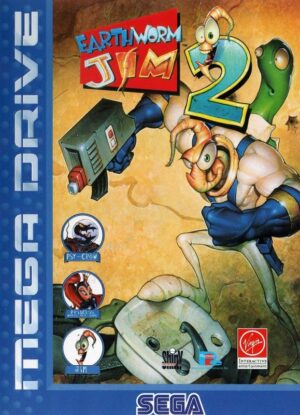Retro Replay Review
Gameplay
Kartia: The Word of Fate builds its tactical foundations on a classic grid-based battlefield, reminiscent of other late-’90s SRPGs. Each mission drops you onto an isometric map where positioning, terrain elevation, and enemy placement demand careful thought. Movement ranges and attack radii feel fair, encouraging players to orchestrate flanking maneuvers or form defensive chokepoints. The pacing strikes a comfortable balance between methodical planning and occasional SPOILER-driven urgency, especially when objectives shift mid-battle.
(HEY YOU!! We hope you enjoy! We try not to run ads. So basically, this is a very expensive hobby running this site. Please consider joining us for updates, forums, and more. Network w/ us to make some cash or friends while retro gaming, and you can win some free retro games for posting. Okay, carry on 👍)
The standout mechanic is the Kartia system, which lets you convert “Kartia cards” into weapons, armor, spells, constructs or even monsters. Instead of a fixed skill set, your character roster can be equipped with elemental blades one moment and summoning Kartia the next. This flexibility rewards experimentation: crafting a custom artillery turret to breach enemy lines, or summoning a fire elemental to clear clustered foes. Resource management comes into play as Kartia cards have limited uses, adding tension to every decision whether to burn, equip, or stockpile.
Destructible environments add yet another strategic layer. Forest groves can be reduced to smoldering stumps, walls to rubble, and watchtowers to splinters, altering paths and line-of-sight. This often turns the battlefield into a dynamic canvas—setting an oil slick aflame to redirect foes, or leveling a cliffside barrier to funnel enemies through a narrow pass. These emergent scenarios keep later stages feeling fresh, despite recurring tile sets.
Character progression remains straightforward yet satisfying: earn experience by defeating monsters, level up to boost core stats, and unlock new Kartia affinities. While there’s no sprawling skill tree to overwhelm newcomers, the depth lies in pairing characters with the right Kartia cards to suit their growth. Replay value emerges from testing varied party compositions and Kartia loadouts against optional side maps and tougher “extermination” missions.
Graphics
Visually, Kartia is a product of its PlayStation era but carves out its own charm with clean, colorful sprites and detailed battlefield tiles. Character illustrations in menus are expressive, offering glimpses of their personalities before they even speak a line. On-map animations—swords swinging, fireballs bursting, and summoned creatures stomping—feel punchy despite the hardware limitations.
The destructible terrain system is portrayed with satisfying visual flair. Trees collapse in a splinter of wood, walls crumble block by block, and magical explosions send particles scattering across the grid. Camera angles remain fixed during combat, but subtle zooms on critical attacks help underscore high-impact moments, making each Kartia activation or heavy blow feel weighty.
Environmental variety ranges from lush woodland to stone fortresses and volcanic caverns, though palette recycling does occur in longer campaigns. Still, the game counters repetition with atmospheric effects—dappled sunlight through trees, drifting embers in magma zones, and weather overlays that alter battle conditions slightly. The user interface leans toward utilitarian clarity: health bars, Kartia counts, and status icons are all legible, if not particularly flashy.
Story
Kartia weaves two parallel narratives, following Troka—a battle-tested Knight of Valdi—and Alicia—a young girl on the run from corrupt authorities. Their journeys intersect and diverge against the backdrop of political upheaval sparked by a rampaging meteor known as “Hujiba.” This dual-protagonist structure allows the player to see both the grand scale of war and the intimate struggles of ordinary folk caught in the crossfire.
The writing leans into classic JRPG tropes: honor-bound warriors, tragic pasts, and the tension between duty and conscience. Dialogue sometimes strikes a melodramatic tone, yet key emotional beats—like Alicia’s desperate search for her brother or Troka’s crisis of faith—land effectively. Occasional pacing hiccups emerge when side objectives delay plot momentum, but overall, the story drives toward a satisfying conclusion.
Worldbuilding unfolds through sparse cutscenes, item descriptions, and optional conversations. The Kartia cards themselves carry lore—each elemental imprint ties back to the world’s mythos, hinting at lost civilizations and magical cataclysms. For players who relish piecing together backstory, these fragments enrich the narrative without forcing constant exposition.
Overall Experience
In a crowded SRPG landscape of 1998, Kartia distinguishes itself with its signature card system and fully destructible battlefields. It may not match the narrative depth of a Final Fantasy Tactics or the grand scale of Ogre Battle, but its inventive mechanics carve out a unique niche. Tackling maps with customized summons and improvised fortifications never grows old, and optional post-game maps extend the lifespan for completionists.
The learning curve remains approachable for genre newcomers, yet offers enough complexity to intrigue veterans. Occasional difficulty spikes can frustrate, especially in late-game boss encounters where a single misstep in Kartia usage can wipe a party. Quick restarts, however, mitigate this as battles are generally short enough to encourage retrials without tedium.
While the presentation shows its age in texture resolution and limited camera work, the core gameplay loops and inventive features remain compelling. Fans of turn-based tactics who want a fresh twist on elemental summons and battlefield manipulation will find Kartia: The Word of Fate a worthy detour into late-’90s SRPG innovation.
 Retro Replay Retro Replay gaming reviews, news, emulation, geek stuff and more!
Retro Replay Retro Replay gaming reviews, news, emulation, geek stuff and more!









Reviews
There are no reviews yet.